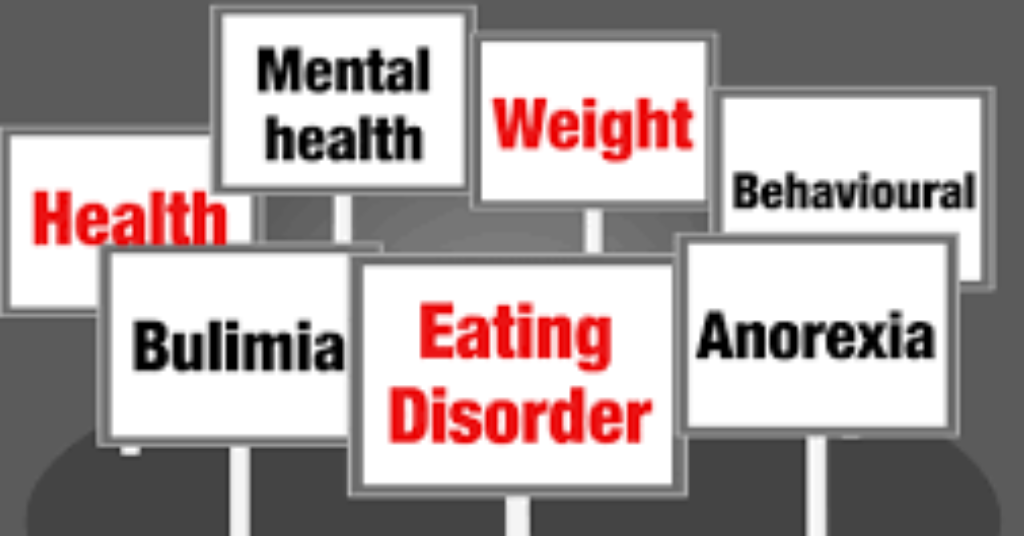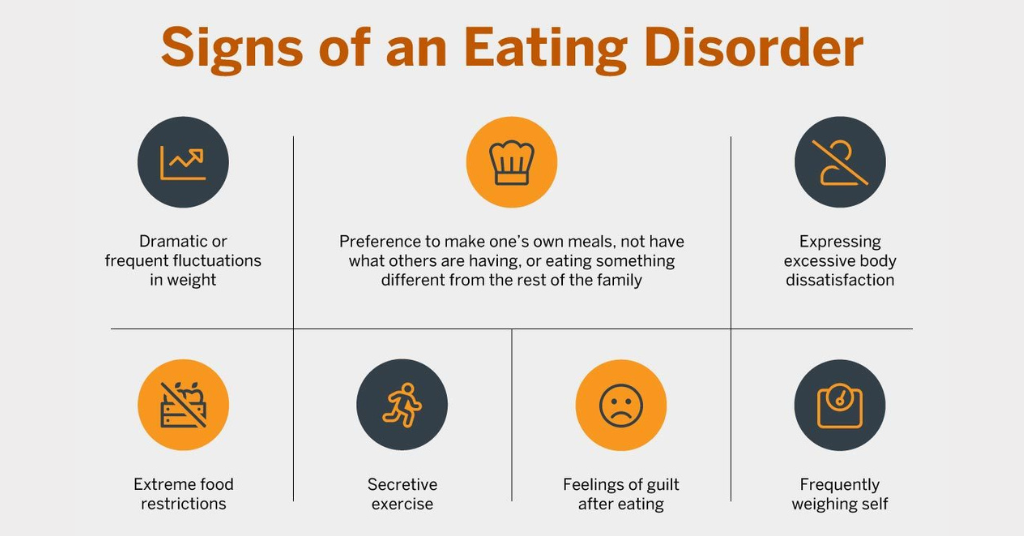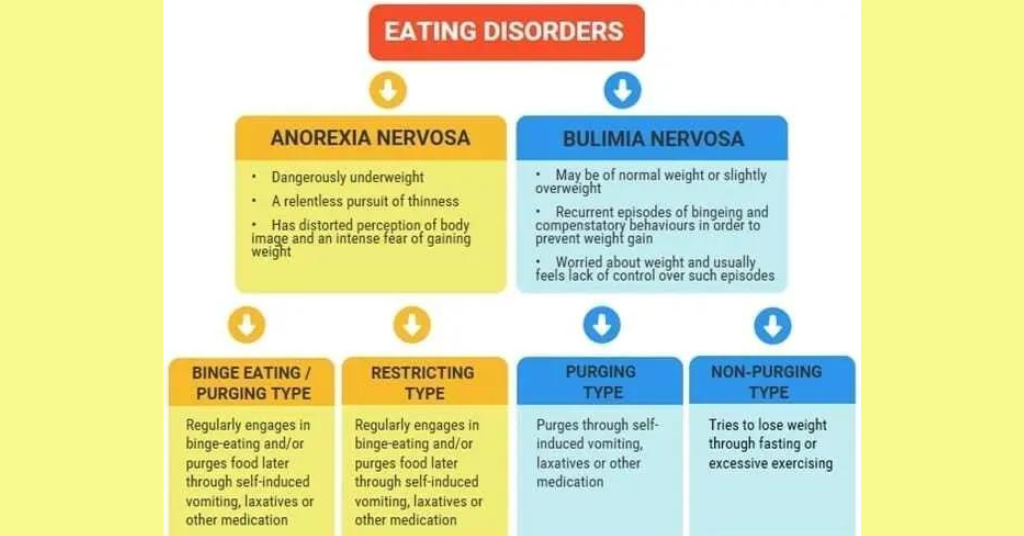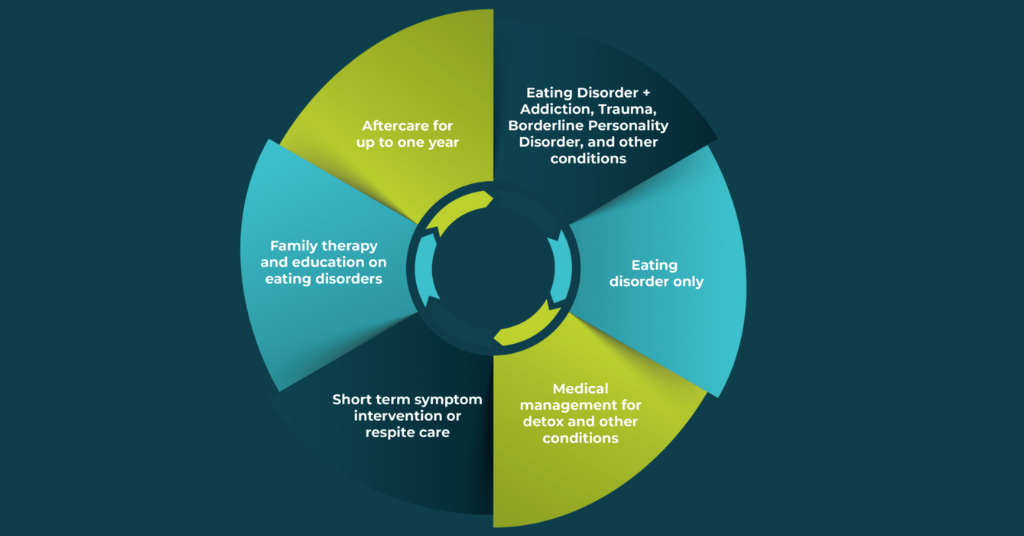Did you know that 95% of eating disorders are more prevalent between the ages of 12 and 25? In this article, we will dive into types of eating disorders.

What Are Eating Disorders?
Types of eating disorders are a sort of mental illnesses, and it’s related to abnormal eating habits, which often result in excessive weight loss or weight gain. Furthermore, millions of people worldwide are affected by eating disorders, with the younger age group being the most affected.
What Are The Causes Of Eating Disorders?
The reasons that contribute to the different types of eating disorders are still unknown. The most significant parameters, however, are given below.
1) Psychological Factors
A person might feel uncomfortable in their body or have a negative body image and low self-esteem. These kinds of people have low esteem and feel anxious, and lack control in life.
2) Genetic Factors
If someone in the family has had an eating disorder, there is a significant chance that someone else in the family will develop it as well.
3) Social Factors
The society also contributes to the different types of eating disorders. For example – If someone gets influenced by skinny models, get more self-conscious about body size and image. Moreover, bullying and sexual abuse can also contribute to it.
What Are The Common Signs Of Eating Disorders?

Different kinds of eating disorders have distinct symptoms. We will discuss the various signs below –
1) Mental And Behavioral Signs
a) Lethargic & constipation.
b) Avoids food.
c) Avoids eating with people or in public.
d) Excessive weight loss.
e) Anxious eating & limiting or avoiding certain foods.
f) Fear of weight gain.
g) Calorie deficit diet.
h) Binge eating.
i) Excessive exercising.
2) Physical Signs
a) Symptoms of the gastrointestinal tract.
b) Feeling dizzy.
c) Constantly feeling cold.
d) Irregular menstrual cycles.
e) Induces vomit.
f) Dry skin and thin hair.
g) A compromised immune system.
Types Of Eating Disorders

1) Anorexia Nervosa
So, Anorexia Nervosa is one of the eating disorders in which a person thinks themselves to be overweight despite being very underweight. Anorexia is a condition in which a person keeps track of their weight regularly, avoids consuming calories, and restricts their food intake. Furthermore, people with anorexia are always thinking about food, hoarding recipes, or strategies to limit their ability to consume calories.
Women are more likely than men to suffer from anorexia. It can also appear in adolescence or early adulthood.
Also, there are 2 types of anorexia
a) Purging Type
In Purging, a person eats a good amount of food or very less. In the end, they try to induce vomit or take laxatives.
b) Restricting Type
So, in the restricting type, a person doesn’t eat food and tries to restrict it all the time.
Common Symptoms Of The Anorexia Nervosa
1) They refuse to acknowledge the fact that they are underweight.
2) Restrict eating foods.
3) Anxious about gaining weight.
4) Lack of self-confidence and self-esteem.
5) Ignorance of the fact that one is underweight.
6) Make a hard effort to lose weight.
Anorexia causes people to become incredibly weak, causing harm to their bodies and bone weakening.
Related Article: 5 Easy Tips To Make Your Kids Eat Healthy Food
2) Bulimia Nervosa
Bulimia is also one of the types of eating disorders in which people frequently eat a massive amount of food at frequent intervals. Such people cannot stop themselves from eating until they’re full and in pain. They binge eat and are unable to refrain from doing so. Furthermore, such persons consume foods that most people would reject.
Such people also tend to provide a lot of discomfort to their intestines by eating first and then trying to purge the food they consumed.
Common Symptoms Of Bulimia
1) Binge eating.
2) Can’t restrict or control themselves to not eat.
3) Leads to frequent purging to prevent weight gain.
4) Low self-esteem.
5) Fear of gaining weight.
A person suffering from bulimia may experience weakness and low electrolyte levels. They will also have a sore throat, worn enamel, and stomach irritation.
3) Binge Eating Disorder
Binge eating disorder is a type of eating disorder in which a person exhibits both anorexia nervosa and bulimia symptoms. They have no self-control and eat a lot of food. Furthermore, such people tend to eat a lot of food in a short period.
After binge eating, people with binge eating disorders do not utilize laxatives or purge.
Also, Binge eating disorder is a more prevalent eating disorder among adolescents.
Common Symptoms Of Binge Eating Disorders
1) A person will eat a large amount of food even if he/she is not hungry.
2) Lack of control of their binge eating episodes.
After eating so much food in such a short amount of time, such people begin to feel guilty and ashamed. Binge eating disorder can also lead to heart problems, obesity, and diabetes.
4) Pica Disorder
Pica disorder is one of those types of eating disorders where a person is attracted to consume certain food which is not food.
In such eating disorders, a person might crave the smell and want to eat things like crayons, chalk, pebbles, soap, ice, pebbles, and detergent.
Common Symptoms Of Pica Disorder
1) Crave non-food items generally.
2) Can’t understand the difference between eatables and non-eatables.
Furthermore, persons with Pica disorder are malnourished, and because they eat items that are devoid of nourishment, they become weaker by the day. It can irritate your stomach, make you susceptible to infections, and cause food poisoning. In conclusion, Pica disorder can cause death.
5) Rumination Disorder
It’s one of the new types of the eating disorder. Rumination disorder occurs when a person re-chews or spits out the food they just ate. This eating issue is more common between the ages of three and twelve months, and it usually goes away. Adults and children are the only ones who need counseling.
If it doesn’t go away with age, then it can cause death or severe weight loss.
6) Avoidant or Restrictive Food Intake Disorder
People who suffer from ARFID are unable to eat because they have low self-esteem and a negative body image. Moreover, they are afraid of gaining weight. Furthermore, such persons are sensitive to specific food scents, colors, and flavors.
Common Symptoms Of ARFID
1) Avoid eating food in public.
2) Avoid food that leads to weight loss.
3) A person gets weak and faces nutrition deficiencies.
7) Other Eating Disorders
There are more types of eating disorders where a person might use laxatives or vomit after eating food. They do not, however, binge eat food. Some people suffer from orthorexia, a condition in which they eat excessive healthy food. They go to great lengths to double-check ingredients and labels. Furthermore, this can result in significant weight loss and other health issues. Lastly, some people binge eat after waking up in the middle of the night. This is also one of the types of eating disorders.
What Should You Do If Your Child Is Suffering From An Eating Disorder?

If your child or loved one has an eating disorder, make sure to support them and take them for counseling or seek help from a professional who can treat them.
1) Aim For CBT
CBT is known as cognitive behavioral therapy which can lower the effects of eating disorders such as binge eating, inducing vomiting, restricting or having a large number of foods.
2) Help Them Feel Confident About Their Body
If your child is facing some body image issues and has low confidence and self-esteem, make sure to fill their mind with positive remarks about their body. Tell them how handsome/beautiful they are. Make sure that they feel valued.
3) Nutritional Therapy
So, if you can combine your CBT with nutritional therapy, it can work wonders. Educate your child about the nutritional facts and the importance of eating certain foods. This can help them eat foods that they usually restrict.
4) Make Them Feel Important
Include them in daily activities, and call them if you’re going out. Make them feel important and appreciated. Don’t let them feel isolated. Take them for a walk, and enroll them in some mindful activities such as online yoga classes, meditation classes, and more.
5) Medications
If there’s some severe case, where therapy is not helping, do take your child to the doctor so that he can recommend medications to treat different types of eating disorders.
Related Article: Beat The Heat With Top 6 Summer Coolers For Kids
Take Away
The eating disorders mentioned above will provide a better understanding of every disorder with its symptoms and causes. These orders mostly start in adolescents and can continue in adulthood.
If they persist longer, they can be fatal and lead to many other health issues. So, if you notice any such changes or symptoms in your kids related to eating disorders, make sure to take therapy or medications to avoid the adverse effects. Also, if you’re someone who wants to know more about such topics and suggestions, do visit us again.
So, if you observe any of these changes or symptoms in your children, make sure to seek treatment or medicine to avoid negative consequences. Also, if you’re interested in learning more about such related issues and suggestions, please come back to see us. Our team uploads a fresh blog daily to ease your overall lifestyle. Be it health, physical fitness, or learning.
We also offer many skill-based online classes such as online yoga classes, online fitness classes, online sports classes, and more. Do explore our blog & courses section.


Leave a Reply